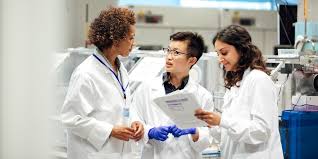How to Become a Pharmacovigilance Associate in India
What is
Pharmacovigilance?
Pharmacovigilance is a fancy word for the process of
monitoring the effects of drugs and other pharmaceutical products.
The process starts with a drug or product being approved by
the FDA, which means that it has been tested and found to be safe and
effective. The drug company then needs to keep track of any adverse reactions
or side effects that occur after the drug is on the market. This is done in
order to determine if there are any long-term problems with the drug, or if it
should be pulled from store shelves.
Pharmacovigilance
is not just about reporting side effects though. It also includes educating
doctors about new drugs, monitoring patient usage patterns, and looking for
trends in how people react to medications (such as how they interact with other
drugs).
Pharmacovigilance is a field of science that deals with
monitoring and studying the adverse effects that a drug or medication may have
on a patient.
Why Should You Opt for
Pharmacovigilance as Your Career?
This is a very important field of work, and it can be very
challenging to do. But, the rewards are worth it.
Pharmacovigilance professionals are in high demand, since
there are not enough people who want to do this work.
There is no one-size-fits-all approach for pharmacovigilance
professionals. There is always something new to learn and get better at, which
will always keep them on their toes and engaged in their work.
Pharmacovigilance professionals enjoy being able to provide
valuable data for clinical trials, as well as make sure that drugs are safe for
patients so they can get. Regulatory
Affairs Courses in India
How Has the
Pharmacovigilance Industry Worked Out so Far?
Pharmacovigilance is a field that has been in existence for
quite some time now. It is the study of adverse drug reactions and the side
effects of drugs. It is also the duty of pharmacovigilance personnel to monitor
and report on these adverse drug reactions to ensure that the public is aware
of any potential risks.
The advent of technology has not only improved our lives but
it has also impacted how we work. The pharmacovigilance industry had to
innovate as well in order to keep up with changes in technology and society,
and over time, it has managed to do so successfully.
https://www.technobridge.in/pharmacovigilance-courses.php
Pharmacovigilance
Associate Salary
The initial remuneration for fresher’s is significantly based
on their academic background, differing from year to year as well as from an
organization to organization.
Who Hires
Pharmacovigilance Professionals
Pharmacovigilance professionals work for a variety of
different organizations, such as pharmaceutical companies, government
organizations, hospitals, and research institutes. They can be employed as
full-time employees or contractors.
What Training Program
Can be Taken to Become a Pharmacovigilance Professional?
The pharmacovigilance professional is responsible for
monitoring and reporting adverse reactions to drugs, which includes generating
safety alerts to regulatory agencies and healthcare providers, as well as developing
risk management plans.
Pharmacovigilance professionals are not required to have a
formal higher education degree in order to work in this field, but they must
have a substantial knowledge of pharmacology, medical sciences and statistics.
In order to become a pharmacovigilance professional, one can take up any of the
following training programs:
- A four year undergraduate degree in Pharmacy + diploma
course in Pharmacovigilance
- A two year graduate diploma course with specialization + PG diploma in
Clinical Research



"Your blog never disappoints! Thanks for the inspiration." for more information visit us on Medical Coding Course in Pune
ReplyDelete